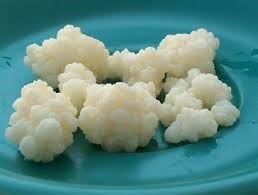 Kefir, also known as kephor, talai, mudu kekiya, kewra, and bulgaros, is a fermented milk food product originally from the Caucasus region’s mountainous areas.
Kefir, also known as kephor, talai, mudu kekiya, kewra, and bulgaros, is a fermented milk food product originally from the Caucasus region’s mountainous areas.
One of its alleged health benefits is that it can inhibit lactose tolerance. This, however, was questioned by some research studies seeing as lactose maldigestors can actually help in tolerating lactose from kefir. This could be proof that lactose in kefir is actually as high as regular milk products. Fermented milk products are also proven to travel or transit in the digestive tract slower than regular milk. This situation actually keeps lactose intolerance at bay.
Factory-produced kefir no longer has the traditional component of real kefir grains. This keeps the kefir flavor constant, giving the factory-made ones the nickname, “kefir mild”.
Ambient temperature is necessary when fermenting kefir the traditional way overnight. Fermentation of kefir produces the lactose that is sour, carbonated, and comparable to alcohol. The consistency will remind one of yogurt.
One more example of kefir food product and by-product is the water kefir. This refers to kefir grown or fermented in water sugar or dried fruit extract. The fermentation period usually lasts for at least one day.
A group of kefir researchers purported that the traditional way of making kefir is by putting kefir grains in an animal skin bag. The grains are soaked in pasteurized milk and injected with sheep intestine flora and culture. Mixing of pure and semi-pure cultures during kefir fermentation have not proven to be successful as of yet, probably because the mechanisms of grain formation is a bit of an unknown territory in the field of kefir studies.
Research studies also show how kefir grains are similar to carbohydrates with bacterial origin due to lactobacilli. This is allegedly responsible for the final shape and structure of the kefir.
